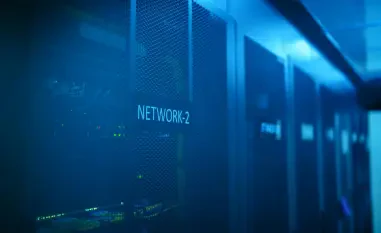In an era where digital threats loom larger than ever, the U.S. government is intensifying efforts to secure its technological foundation and modernize outdated systems, marking a significant step forward on September 29 with the Cybersecurity and Infrastructure Security Agency (CISA) launching Cybersecurity Awareness Month under the banner of “Building a Cyber Strong America.” This initiative arrives at a critical juncture, as federal agencies grapple with evolving cyber risks while navigating a landscape of legislative reforms and budgetary challenges. From protecting the nation’s critical infrastructure to streamlining software procurement and safeguarding scientific innovation, the intersection of cybersecurity and federal tech policy has never been more vital. This campaign serves as a rallying cry for collaboration across government, industry, and local entities, spotlighting the shared responsibility to fortify digital defenses. As cyber incidents continue to disrupt essential services worldwide, the urgency of such efforts cannot be overstated. This article explores the multifaceted developments shaping the federal technology sphere, delving into CISA’s latest push for resilience alongside other pivotal updates that reflect the government’s broader commitment to innovation and security.
Bolstering Digital Defenses with CISA’s Campaign
CISA, operating under the Department of Homeland Security, has set an ambitious tone for Cybersecurity Awareness Month with a focus on strengthening the nation’s critical infrastructure. Acting Director Madhu Gottumukkala has underscored the indispensable role of these systems, describing them as the backbone of everyday life. The campaign targets a wide audience, including federal agencies, small and medium businesses, and state, local, tribal, and territorial governments. By emphasizing the protection of essential services like power grids, water systems, and transportation networks, CISA aims to raise awareness about the cascading effects of cyber disruptions. The theme of building resilience resonates deeply in a time when ransomware and other attacks frequently target vital sectors. Through this month-long initiative, the agency seeks to foster a culture of proactive defense, encouraging stakeholders to prioritize cybersecurity as a fundamental aspect of operational stability.
A key component of CISA’s strategy involves promoting actionable, foundational practices that can significantly reduce vulnerabilities. The agency is advocating for widespread adoption of multi-factor authentication, regular software updates, strong password protocols, and vigilant reporting of phishing attempts. These measures, though seemingly basic, are proven to thwart a substantial number of cyber incidents. CISA is also providing an array of tools and resources designed to help organizations fortify their networks against sophisticated threats. This approach reflects an understanding that resilience begins with the basics, especially for entities that may lack advanced cybersecurity capabilities. By urging partners to “make resilience routine,” the campaign highlights the importance of consistent, collective action in safeguarding national security and economic well-being. The emphasis on accessible solutions ensures that even resource-constrained groups can contribute to a stronger cyber ecosystem.
Legislative Strides Toward IT Modernization
On September 25, a bipartisan coalition of House lawmakers reintroduced the Strengthening Agency Management and Oversight of Software Assets (SAMOSA) Act, signaling a renewed push to reform federal software procurement. This legislation, initially spearheaded by the late Rep. Gerry Connolly, addresses persistent inefficiencies in how agencies acquire and manage software, a critical component of government operations. The bill mandates the creation of comprehensive software inventories, independent assessments of license management, and the development of enterprise licensing agreements under the oversight of Chief Information Officers. Such measures aim to curb wasteful spending and enhance transparency across federal IT systems. Supported by industry coalitions like the Coalition for Fair Software Licensing, the SAMOSA Act reflects a growing consensus on the need for structured approaches to technology acquisition in the public sector.
The reintroduction of this bill also underscores broader efforts to modernize government technology infrastructure amid increasing digital demands. By requiring the Office of Management and Budget to formulate a government-wide software modernization strategy, the legislation ensures that reforms are not piecemeal but part of a cohesive plan. Agencies must integrate their software management plans and performance metrics into annual budget submissions, fostering accountability at every level. Lawmakers from both parties, including Reps. Shontel Brown and Pat Fallon, have championed this initiative, demonstrating a rare unity in addressing systemic IT challenges. The potential cost savings and operational improvements from streamlined software practices could have far-reaching impacts, freeing up resources for other critical priorities. As federal systems become more interconnected, the urgency to eliminate redundancies and vulnerabilities through such reforms grows ever more pressing.
Budget Battles Threaten Scientific Progress
A pressing concern has emerged over proposed budget cuts to NASA in the FY 2026 President’s Budget Request, prompting bipartisan alarm among lawmakers. Led by Reps. Judy Chu and Don Bacon, a coalition is urging House Appropriations leaders to include protective language in an upcoming short-term continuing resolution. Without such measures, significant reductions could take effect as early as October 1, threatening up to 20 space science missions. These projects, representing a taxpayer investment of approximately $12 billion, include spacecraft exploring distant planets like Jupiter and Mars. The potential for what lawmakers describe as an “unprecedented, single-year cut” has raised fears of irreversible damage to scientific advancement. With Congress racing to avert a government shutdown, the stakes for preserving NASA’s funding have reached a critical level.
The implications of these cuts extend far beyond the immediate loss of missions, touching on national security and global competitiveness. Lawmakers warn that slashing NASA’s budget could stall commercial innovation, disrupt scientific discovery, and weaken the U.S. position in the international space race, particularly against rivals like China. The bipartisan nature of this outcry highlights the strategic importance of space exploration as a driver of technological progress and economic growth. Even though Congress has rejected many proposed reductions in committee drafts, the absence of explicit protections in the continuing resolution could allow unilateral action by the Office of Management and Budget during the interim funding period. This situation exemplifies the delicate balance between fiscal constraints and the need to invest in long-term priorities, casting a spotlight on how budgetary decisions shape the nation’s future in science and beyond.
Addressing Gaps in Federal Oversight
A recent report from the Government Accountability Office (GAO) has exposed significant shortcomings in the quality of federal contracting data for FY 2023, raising concerns about transparency and accountability. Of the 70 agencies reviewed, only half could confirm the completeness and accuracy of their data submissions to the Federal Procurement Data System. Alarmingly, 34 agencies either failed to file required quality reports or did not respond at all. Even among the 24 Chief Financial Officers Act agencies, none fully met the Office of Management and Budget’s reporting standards, with many missing submission deadlines. The GAO stressed that reliable spending data is essential for identifying waste, fraud, and abuse of taxpayer dollars. These findings point to systemic flaws in how federal procurement information is managed, posing risks to effective governance.
In response to these issues, the GAO has proposed actionable recommendations to enhance compliance and data accuracy, which most agencies have agreed to implement. However, the widespread non-compliance revealed in the report suggests that deeper reforms are needed to enforce standards and improve oversight mechanisms. The lack of dependable data undermines public trust and hampers efforts to ensure fiscal responsibility across government operations. As federal spending continues to grow in complexity, the need for robust systems to track and verify contracting information becomes increasingly critical. Addressing these gaps is not merely a technical challenge but a fundamental step toward maintaining accountability in the stewardship of public resources. The GAO’s critique serves as a call to action for agencies to prioritize data integrity as a cornerstone of effective administration.
Navigating a Path Forward in Federal Tech Policy
Reflecting on the events of late September, it became evident that the federal government had taken decisive steps to confront pressing technology and security challenges. CISA’s launch of Cybersecurity Awareness Month stood as a powerful reminder of the ever-present need to protect critical infrastructure through collective vigilance and practical measures. Simultaneously, legislative efforts like the SAMOSA Act demonstrated a commitment to overhauling outdated IT practices, paving the way for greater efficiency and transparency. The bipartisan push to shield NASA from devastating budget cuts underscored the high stakes of maintaining strategic investments, while the GAO’s findings on data quality highlighted persistent hurdles in federal accountability.
Looking ahead, the path forward demands sustained collaboration among government entities, lawmakers, and industry partners to build on these initial efforts. Prioritizing cybersecurity through ongoing education and resource allocation can help fortify national defenses against evolving threats. Implementing legislative reforms with diligence will be crucial to modernizing federal systems, while protective measures for vital programs like NASA must be secured to preserve innovation. Addressing data quality issues through stricter enforcement and better systems offers a chance to restore trust in public spending. These actionable steps, rooted in the momentum of recent initiatives, provide a roadmap for navigating the complex intersection of technology, policy, and fiscal responsibility in the years to come.













